Team Factor Q&A
We sit down with 7FX's Pavel Sinagl to find out more about this upcoming squad-based FPS.
Without question, team-oriented first-person shooters are a favorite among fans of the action genre. Initially started by Red Storm's Rainbow Six and presently fueled by the popularity of Counter-Strike and other games like it, the subgenre shows no signs of slowing down, and small Czech Republic developer 7FX hopes to capitalize on the frenzy with its upcoming game, Team Factor. Team Factor lets you select from three different teams, each with its own subunits, soldiers, and specialized set of weapons. Once the action begins, all three teams must complete a series of objectives that have been designed in a way that prevents two teams from forming an alliance and taking on the single remaining team. Of course, you're also forced to decide whether you want to take a more offensive approach and tackle the mission objectives right away or stay back and form a defense to make it difficult for other teams to complete their objectives. How well you perform in a mission factors into what kind of weapons you have access to in later missions.
We caught up with Pavel Sinagl of 7FX to learn more about Team Factor, including the differences between teams and subunits, as well as the game's weapons, secondary items, and different mission objectives.
GameSpot: Tell us a little more about the company behind Team Factor. How did 7FX come together?
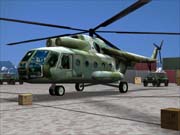
Pavel Sinagl: The originator of the whole project is Marek Trefny, who is actually the lead programmer as well. Back in 1999, he finally came to the decision to start work on his own engine for a project he wanted to start. In October 1999, he invited a few people--along with his friend Petr Slavik--to set up the project and start working under the wings of Czech IT company ICCC, where they successfully presented their plan to develop computer games. From that point, the rest of the team guys were hired in May 2000, and in the summer of that year, the first demo showcasing our engine technology was finished and ready to be shown to the public. I joined in at that time and helped to shape the game idea into the form that we are presenting today.
GS: What inspired 7FX to create a team-oriented first-person shooter?
PS: The game was inspired by other successful tactical shooting games, ranging from Rainbow Six to our beloved Counter-Strike. We love such games, but we always thought something was missing from them. We simply started right there with the goal to deliver what we want to have in perfect team-oriented multiplayer tactical ops game.
GS: One of the key elements in Team Factor appears to be the inclusion of three distinct teams. Do these teams have any differences other than physical features?

PS: Yes, the differences may not be major, but there are trade-offs in some tactical abilities.
GS: Having three teams allows two teams to form an alliance and attack the third team. Do you foresee this being a major problem? If so, how will you address it?
PS: No, the goals are set so that they prevent alliances from forming between two teams against a third one. Only one team can win.
GS: Can you give examples of the kind of objectives each team encounters?
PS: All three teams will experience both offensive and defensive missions in the game. The missions range from [stealth infiltration of] an enemy facility with the objective to steal information or a device, to quick and noisy assaults on a military base. Of course, on the other side, there are missions where you must prevent the enemy infiltration or defend a facility.
GS: In addition to different teams, there are unique soldiers within each team. What are the differences between these soldiers, and how do their unique skills come into play?
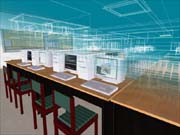
PS: We have not only given the soldiers specializations, but we also [want to bring] an important RPG factor into the game by enabling a player to cultivate the skills they want so they can use whatever strategies they prefer. These specializations are differentiated by access to specific weapons that are only useful for a particular task. Other support devices, like body armor protection, [can affect] speed and stealth. The soldiers work best when they're working together. For example, a scout may report targets to a sniper, who may go on to warn the team of hidden enemies or provide cover fire for a retreating team.
The first of the four units is the ordinary soldier, which is the most common choice, since it has abilities taken from other units. But the soldier can't develop its skills to the levels that other more specialized units can. The second unit, the scout, is oriented toward players that enjoy playing as spies. The scout uses stealth as a primary ability, but the unit also has access to silencer-equipped weapons and a few detection devices. The specialist unit is for those that like to employ a lot of firepower, as it can use grenade launchers, machine guns, and other powerful weapons. The specialist is perfect for providing fire support for the rest of the team. The last of the units is the sniper, which has two primary skills--surveillance and precise team support.
GS: Taking a look at the current list, there will be an enormous number of weapons in Team Factor. How many do you plan to include in the final game?
PS: We have some 42 weapons by now--26 out of that modeled in high-resolution--and there are more candidates in the pipeline. I can imagine the total number being around 45 models, not counting subvariants.
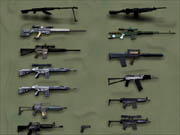
GS: Are there any secondary items like grenades, explosives, or night-vision goggles?
PS: Yes, there will be several types of grenades, as well as demolition charges and booby traps.
GS: How will players acquire new weapons and items?
PS: The weapons are assigned according to the specialization. Depending on team performance and personal skill development, [the teams] are provided with access to more expensive toys.
GS: How important was it to be able to visit the CZ Arms factory to gather information on various weapons?
PS: We have had a great time in CZ Arms. Along with the materials useful for creating [weapon] models, we received a lot of leads and practical information [on different types of firearms]--thanks to the rich experiences of Mr. Milan Trkulja, the marketing manager of the company. We have also visited the production facility.
GS: A number of early screenshots feature helicopters. Will there be other types of vehicles in the game? If so, what are their functions?
PS: Yes, we do have some more vehicles in the game, but they are not controllable. Some of them are directly related to mission objectives, while others are just there to complement the design of the environment. So there are no [simulation elements in the game]. Due to the tight time limit of each mission, you don't have much time to drive around anyway! But as the missions progress into hostile territory--at least for two teams at the same time--the vehicles are the way in and out of the missions.
GS: Obviously a major complaint about other team-oriented first-person shooters is that they aren't realistic enough. How realistic is Team Factor going to be?
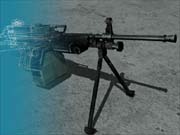
PS: The main goal is the gameplay, [so the emphasis is not on complete realism]. But don't get me wrong, the weapons performance, environment design, and other aspects are designed with realism in mind. We feel there is much more fun if we adjust the realism of the game.
GS: Is Team Factor multiplayer only?
PS: Yes, the game is designed for a multiplayer environment, but our plan is to have three teams filled with quite intelligent bots that have learning abilities. Whenever players log in, they will replace one of the bots [depending on the team they join]. So, theoretically, Team Factor can be played with only one player by having the other 29 players driven by AI. But of course the fun is in outsmarting real-life opponents.
GS: How many players does Team Factor support?
PS: Right now I see a reasonable number of 30--10 for each side. The missions are designed to accommodate [a high number] of players, so there will be plenty of space for great tactical combat. On the other hand, with respect to the mentioned time limit, there is no way you can just hang around--everyone must do his or her part quickly to accomplish the team mission objectives.
GS: Do the environments in Team Factor consist mainly of military installations or will there be a little more variation?
PS: There will be a little more variation, but yes, the missions are oriented toward military-like installations.
GS: What are the benefits of using your own engine as opposed to the Quake III or Unreal Tournament engines?
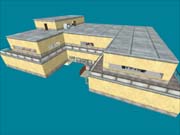
PS: The cost! For a new unknown team, it's better to start with a [propriatary game engine]. There really isn't a time-saving factor when using a licensed engine for a first game since programmers have to learn how to master it. But a major benefit of using the same engine the second time around is that it won't take as much development time.
GS: Though the game is still early in development, has the team encountered any problems or any major setbacks?
PS: No, not major I would say. There are always a lot of challenges, but that's what makes creating new games interesting.
GS: Was there any initial concern that Team Factor would simply be billed as a Counter-Strike clone?
PS: No doubt there will be, and in many respects, [that's exactly] right. But we are honestly trying to add our own part to it and develop the genre the way we like. But to be completely clear--we are not pretending that we do not know about Counter-Strike. We respect what other people have done to develop such a fantastic phenomenon.
GS: Thanks for your time, Pavel.
Got a news tip or want to contact us directly? Email news@gamespot.com
Join the conversation